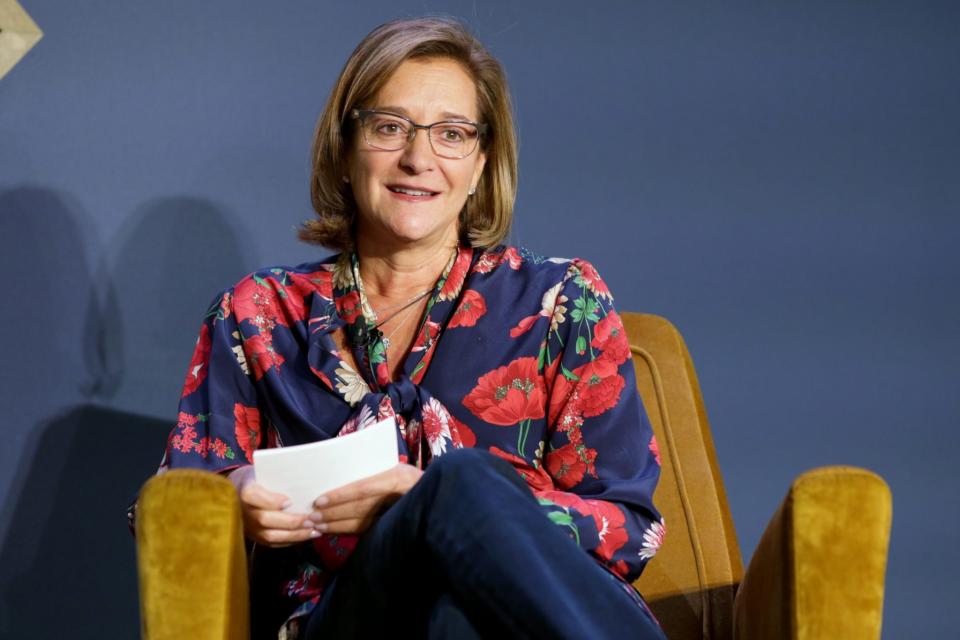Abercrombie & Fitch outperformed AI darling Nvidia in 2023—its CEO credits COVID lessons for stock market surge

Blazers and slacks outshone chipmakers in 2023 despite the furor around AI—and the CEO of Abercrombie & Fitch says targeting young millennials was the golden ticket.
Ohio-based Abercrombie & Fitch exploded onto the market in the 1990s with its all-American college sports aesthetic.
But with a boom in online retail and with fast fashion flooding the market, Abercrombie has found itself in more recent years struggling to cut through the noise.
On top of that customers were also turning their backs on a company that was engulfed in race, religion, sex discrimination, and harassment lawsuits.
So when CEO Fran Horowitz joined in 2017 she had her work cut out to rebuild the brand from the “ground up”—but it seems to have worked.
In the past year, the company’s share price has jumped more than 245%, buoyed by strong profit reporting and guidance.
That means the once infamous jeans maker is now outperforming the likes of Nvidia—which although has a higher share price of $522.53 vs Abercrombie's $95.27—has seen its share price rise 234% over the past year.
Earlier this week Abercrombie further thrilled investors by raising its Q4 2023 outlook after a stronger-than-anticipated holiday trading, with net sales expected to rise into the high teens percentage range, compared with its previous estimations of lower double-digit figures.
Horowitz said rebuilding the company at every level had been necessary to bring in such results, telling CNBC: "[The outlook is] the result of a lot of hard work over the past few years, focussing on rebuilding our brands, investments into our technology, [and] rebuilding the company foundationally from top to bottom."
Horowitz said Abercrombie learned during COVID to operate lean.
In its Q3 earnings reported in November, the brand said "tightly controlled" inventories had contributed to a gross profit rate expansion of 570 basis points.
The company's adjoining data revealed an inventory of $595 million, a decrease of 20% compared to the same quarter a year prior. This has led to lower write-downs of inventories.
"Chasing that last sale is the biggest learning that we had coming out of COVID," Horowitz said. "You can do a lot more with a lot less and I think it took a year like that and a really strong lesson to understand how you can manage your business very differently. That's truly what's helping drive the terrific results that we're seeing this year."
Shaking away the past
A complete overhaul was necessary for the brand to fully distance itself from allegations of the past.
In 2023 Abercrombie's former CEO Mike Jeffries, who left in 2014, was accused of sexually abusing young men and allegedly ran a sprawling sex ring. A spokesperson for Jeffries told CNBC the matter will be addressed in court.
Abercrombie has been hit with a lawsuit for alleging turning a blind eye to these actions at the time.
A spokesperson for Abercrombie & Fitch said in an emailed statement that the company was “appalled and disgusted” by the alleged behavior, which had been brought to light by a BBC investigation.
Taking advantage of a 'big white space'
It's not often brands forget to cater to young Millennials, but specifically shifting its focus to this demographic is what brought the wins for Abercrombie & Fitch.
When questioned about which brands the company was taking market share from, Horowitz insisted she was merely filling in a blank. "[With] Abercrombie particularly there was just a big white space for us, and we aged up the consumer and went to this young Millennial consumer," Horowitz said.
"There really wasn't a lot of competition in that space and so we seized the opportunity," she added.
Targeting age-specific consumers has also given Abercrombie a pipeline: pushing their teen buyers at Hollister up to Abercrombie as they age.
"[Hollister] was a lot of work heading into back to school this year, and we're happy to see the inflection and we've seen it across now Q3 and Q4," Horowitz said.
With questions still looming over how robust the consumer is and how long it will take inflation to come down, retailers are keeping a close eye on economic data and the likelihood of a recession.
This story was originally featured on Fortune.com
